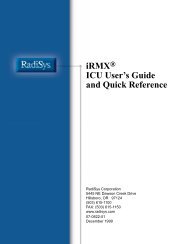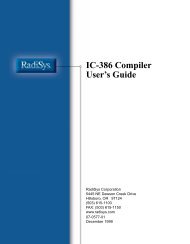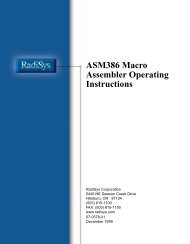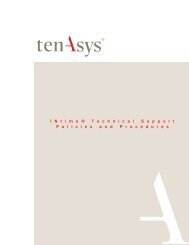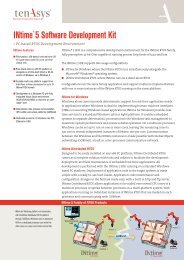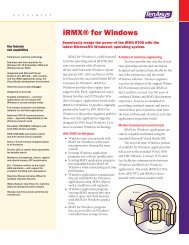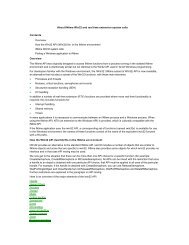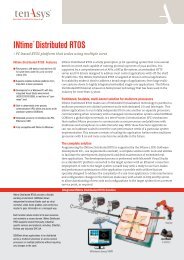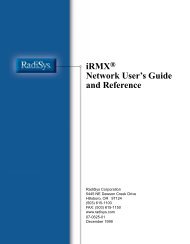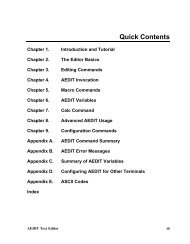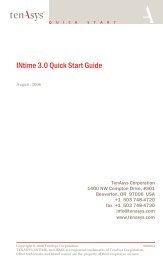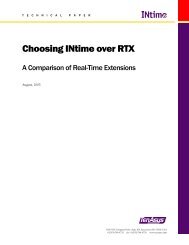INtime® 3.1 Software - tenAsys
INtime® 3.1 Software - tenAsys
INtime® 3.1 Software - tenAsys
Create successful ePaper yourself
Turn your PDF publications into a flip-book with our unique Google optimized e-Paper software.
Chapter 2: Understanding INtime software architecture<br />
About the Windows HAL<br />
INtime software uses the Windows HAL, but intercepts certain functions to perform<br />
the following actions:<br />
• Traps attempts to modify the system clock rate so that the RT kernel can control<br />
the system time base.<br />
• Traps attempts to assign interrupt handlers to interrupts reserved for RT kernel use.<br />
• Ensures that interrupts reserved for RT kernel use are never masked by<br />
Windows software.<br />
INtime software is compatible with all HAL files shipped with the standard Windows<br />
products.<br />
About thread scheduling<br />
Priority-based scheduling<br />
The RT kernel switches between threads and makes sure the processor always executes<br />
the appropriate thread. The kernel’s scheduling policy is that the highest priority<br />
thread that is ready to run is/becomes the running thread. The kernel maintains an<br />
execution state and a priority for each thread and enforces its scheduling policy on<br />
every interrupt or system call.<br />
A priority is an integer value from 0 (the highest priority) through 255.<br />
Range<br />
Usage<br />
0–127 Used by the OS for servicing external interrupts. Creating a thread that<br />
handles internal events here masks numerically higher interrupt levels.<br />
128–130 Used for some system threads.<br />
131–252 Used for application threads.<br />
Execution state<br />
Interrupt threads mask lower-priority (numerically higher) interrupt levels. When you<br />
assign interrupt levels, give a higher-priority (numerically lower) level to interrupts<br />
that can’t wait, such as serial input, and a lower priority (numerically higher) to<br />
interrupts that can wait, such as cached input.<br />
The execution state for each thread is, at any given time, either running, ready, asleep,<br />
suspended, or asleep-suspended. The RT kernel enforces the scheduling policy in<br />
which the highest priority ready thread is always the running thread.<br />
23



